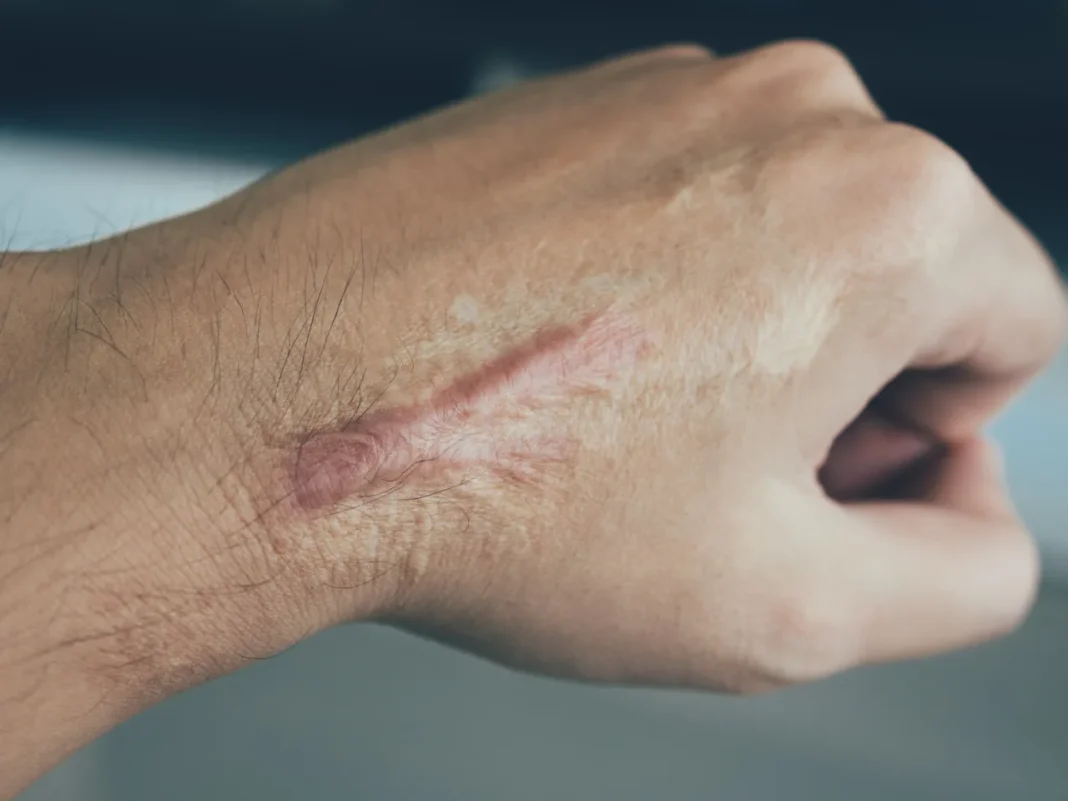Skin is the body’s natural barrier, designed to protect us from infections and injuries. When the skin experiences trauma, it repairs itself by producing scar tissue. For some people, however, this process goes beyond normal healing, resulting in the formation of keloids. These scars can appear larger than the original wound and often cause both physical discomfort and emotional stress. Learning about keloids, their causes, and treatment options is the first step in managing this condition effectively.
Defining Keloids
A keloid is an overgrowth of scar tissue that develops where the skin has healed after an injury. Instead of fading with time, keloids tend to grow and become more noticeable. They are typically raised, thick, and extend beyond the borders of the original wound. Unlike regular scars, keloids do not shrink on their own and can sometimes continue to enlarge for months or even years.
For a detailed overview of the condition, including medical insights, you can explore this guide on what-is-a-keloid.
Why Do Keloids Form?
Although the precise reason behind keloid formation is still being studied, experts believe that it results from the body’s exaggerated response to skin injury. Instead of stopping once the wound closes, the body keeps producing collagen in excess. This leads to the growth of scar tissue that becomes raised and firm.
Certain factors increase the chances of developing keloids:
- Genetic predisposition: Keloids often run in families.
- Skin tone: Darker skin types have a higher risk of keloid formation.
- Age group: They commonly appear in teenagers and young adults.
- Location of injury: Keloids frequently occur on the chest, shoulders, earlobes, and cheeks.
Common Characteristics of Keloids
Keloids are distinguishable by their unique features. Individuals who develop them may notice:
- Shiny, rubbery scar tissue that feels firm to the touch
- Pink, red, or darker pigmentation compared to surrounding skin
- Continued growth beyond the initial injury site
- Discomfort such as itching, tenderness, or pain
Although keloids are not dangerous, they often affect a person’s appearance, leading to feelings of self-consciousness.
Treatment Methods
Treating keloids can be challenging because they have a tendency to recur even after removal. Still, modern medicine offers several options to manage them:
1. Steroid Injections
Injected directly into the scar, steroids help reduce inflammation and flatten the keloid. This method is one of the most commonly recommended treatments.
2. Laser Therapy
Laser treatments improve skin texture and decrease redness, making keloids less visible. This option may be combined with other therapies for more effective results.
3. Surgical Removal
Keloids can be cut out through surgery, but this method carries a risk of recurrence. To minimize this, doctors often pair surgery with additional treatments such as radiation or steroid injections.
4. Cryotherapy
Freezing keloids with liquid nitrogen can shrink them, particularly when they are small. Multiple sessions may be needed.
5. Topical Treatments
Silicone gels and sheets are widely used to soften scars and reduce thickness over time. These are non-invasive and often suggested for daily use.
6. Radiation Therapy
In certain severe cases, low-dose radiation following surgical removal may be used to prevent the keloid from returning.
Can Keloids Be Prevented?
While not all keloids can be avoided, there are steps that individuals prone to them can take:
- Careful wound management: Keep wounds clean and protected during healing.
- Avoid elective skin trauma: Minimize piercings, tattoos, or unnecessary surgeries if you are at risk.
- Use preventive products: Applying silicone sheets or gels early can help reduce abnormal scar formation.
- Seek medical advice: Consulting a dermatologist at the first sign of abnormal scarring is crucial.
Emotional and Social Impact
Beyond the physical symptoms, keloids can impact self-esteem, especially when located in visible areas. Many individuals feel self-conscious in social situations, while others experience frustration over persistent itching or discomfort. Support from healthcare professionals, cosmetic solutions, and counseling can help people cope better with the condition.
Conclusion
Keloids are more than just scars—they are the result of the body’s overactive healing response. While they are not harmful to overall health, they can cause significant cosmetic and emotional challenges. With various treatments available, from medical interventions to preventive care, individuals can find ways to manage keloids effectively. Recognizing early signs and seeking timely treatment can make a significant difference in outcomes.
